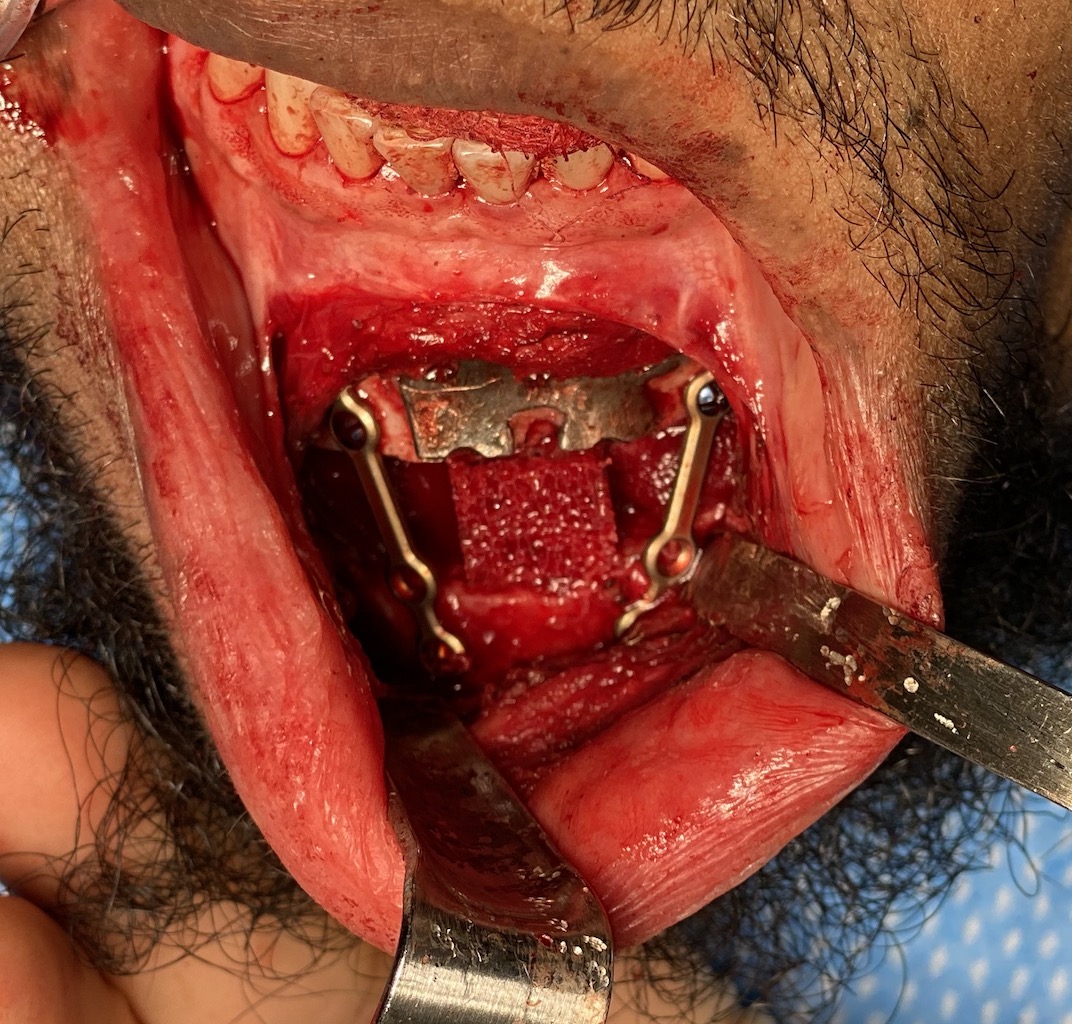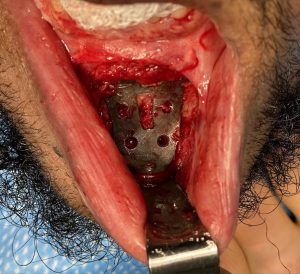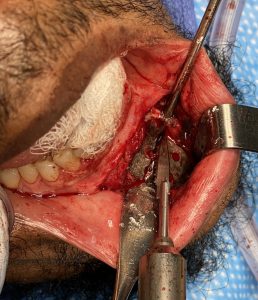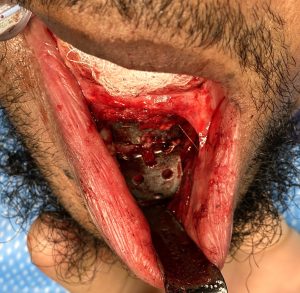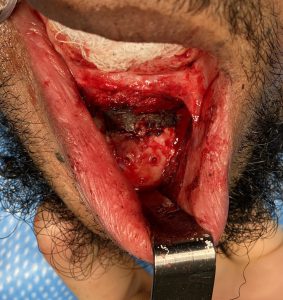Background: Vertical chin lengthening can be done by either an implant or a lengthening of the bone. While implants have limitations as to how much lengthening can be effectively done, osteotomies do not. While some surgeons feel that the amount of vertical chin lengthening needs to be limited this appears to be based on a concern of the interpositional bone gap created to heal. This has not been my experience but that concern is obviated by always grafting the interpositional gap. This is almost always done by tissue bank bone grafts, either corticocancellous chips or blocks.
How much vertical chin lengthening can be done is based, in my experience, on how much the bony gap can be pushed open during surgery. In almost all patients this can be at least 10mms which is usually enough for most patient’s aesthetic needs. Beyond 10mms resistance is often encountered and getting to 12 or 14mms can be very difficult to impossible. There is also the challenges of getting fixation hardware adequately applied across every enlarging bony gaps.
While significant vertical bone lengthening can be achieved in a primary procedure, how much can be done in a chin that has already had a sliding genioplasty performed? Does the previous osteotomy cause scar that limits the amount of bone movement? Can the hardware that has been used be satisfactorily removed?

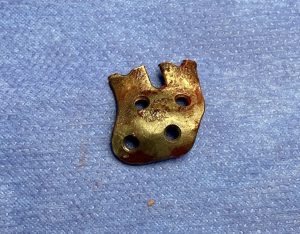
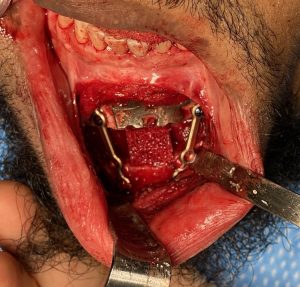
This case illustrates several issues. First, large fixation plates are not really needed for chin osteotomies to heal as the chin is not exposed to any significant displacement forces. Large plates with lots of screws can make for a difficult secondary genioplasty should the plate not be able to be removed. Whether surgeons realize it or not up to 20% of bony genioplastigs will eventually undergo another chin bone surgery for a variety of aesthetic improvements. Secondly, a prior genioplasty may limit subsequent movements due to scar tissue and other soft tissue limiting effects.
Case Highlights:
1) Prior bony chin osteotomies create difficult fixation hardware removal when secondary bony chin osteotomies are needed.
2) While total chin hardware removal is desired enough of the hardware must be removed to at least complete a side to side osteotomy.
3) Significant vertical chin lengthening requires an interpositional graft and the consideration of whether the lower lip will be pulled down with it.
Dr. Barry Eppley
Indianapolis, Indiana

